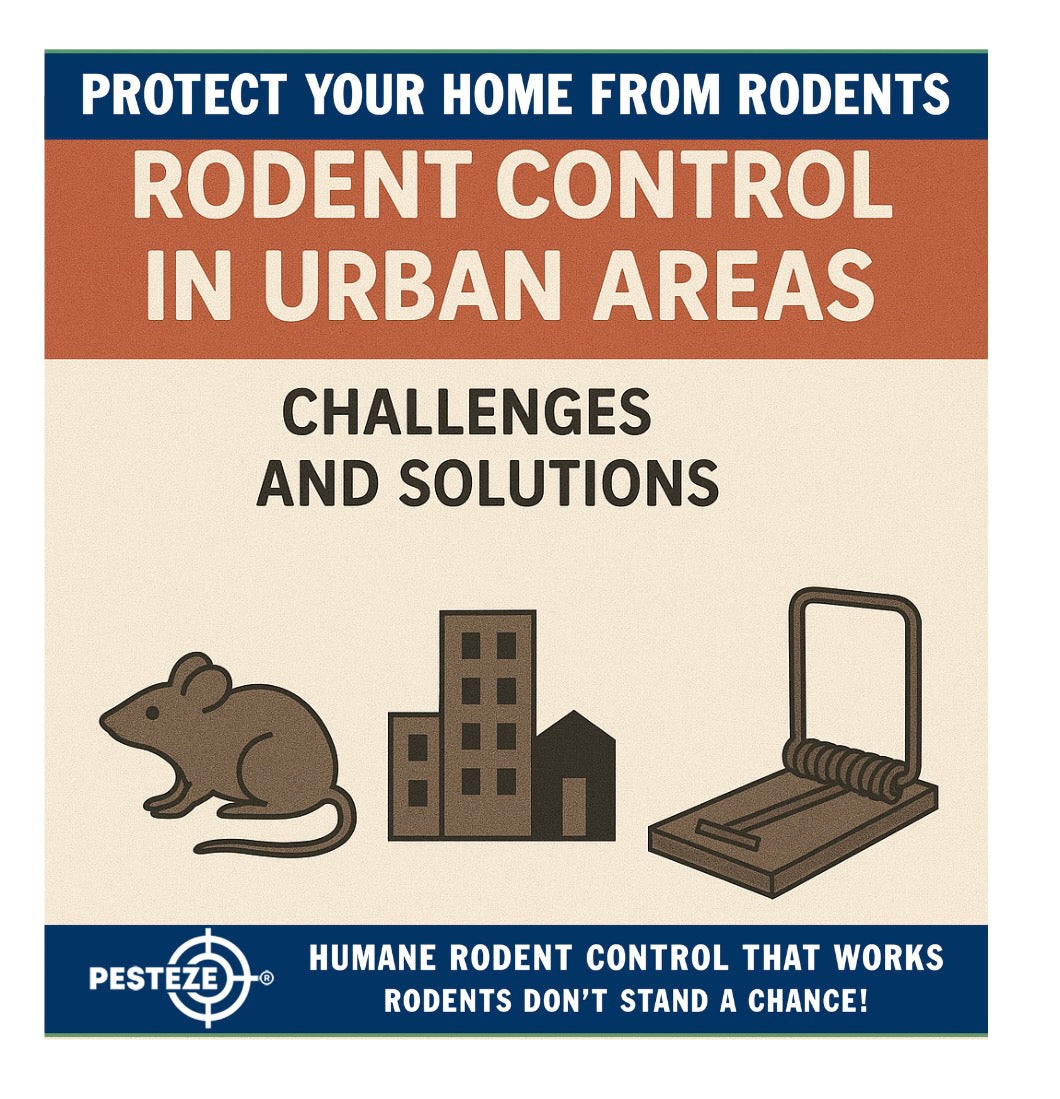RODENT CONTROL IN URBAN AREAS: CHALLENGES AND SOLUTIONS

RODENT CONTROL IN URBAN AREAS: CHALLENGES AND SOLUTIONS
SUMMARY
Urban environments create the perfect conditions for rodents to thrive. From food waste to aging infrastructure, cities face unique pest control challenges. Learn what makes rodent control more difficult in urban areas—and the most effective ways to manage infestations.
FEATURES
-
High Population Density: More people means more waste and shelter for rodents.
-
Aging Infrastructure: Old buildings and sewer systems provide easy access and nesting spots.
-
Abundant Food Waste: Trash bins, dumpsters, and litter offer constant food sources.
-
Limited Access for Extermination: Tight spaces and shared properties complicate pest control.
-
Rodent Resistance: Urban rodents often adapt quickly to traditional control methods.
-
Public Health Risks: Rodents in city environments spread diseases rapidly and widely.
DESCRIPTION
Cities are bustling hubs of human activity—but they’re also hotspots for rodent activity. Rats and mice are highly adaptable, and urban areas provide them with everything they need to survive: shelter, warmth, and abundant food. Unfortunately, this makes rodent control in cities particularly challenging.
One major issue is high population density. More people means more opportunities for rodents to find food scraps and nesting locations. With restaurants, residences, and businesses all packed closely together, it’s easy for rodents to migrate between buildings and remain undetected until infestations grow.
Aging infrastructure is another key factor. Crumbling foundations, deteriorating sewer lines, and gaps in older buildings make it simple for rodents to enter and establish themselves. These structural vulnerabilities are often widespread in cities with historic or outdated construction.
Food waste management also plays a major role. Overflowing dumpsters, littered streets, and improperly sealed trash bins act as buffet lines for city rodents. Even a small amount of food left behind can attract a large number of pests.
In addition, limited access can hinder effective extermination. Apartment buildings, shared basements, and tight crawlspaces can restrict where pest control professionals can work, especially when multiple tenants or landlords are involved. This leads to inconsistent treatment and recurring problems.
Urban rodents are also more adaptive than their rural counterparts. Constant exposure to control efforts means they often develop resistance to traps, poisons, and repellents. This makes traditional strategies less effective over time without ongoing evaluation and adjustment.
Finally, the public health risks posed by rodents in urban environments are substantial. Rodents carry diseases like leptospirosis, hantavirus, and salmonella, which can spread rapidly in densely populated areas. Droppings, urine, and contamination of food or water sources increase the risk of serious outbreaks.
Solving these issues requires a multifaceted approach. Municipal cooperation, consistent sanitation, building repairs, and modern rodent monitoring tools are key to long-term success. Community education also plays an important role—because effective rodent control is only possible when everyone participates.
- Nikita Gulrajani


Comments 0